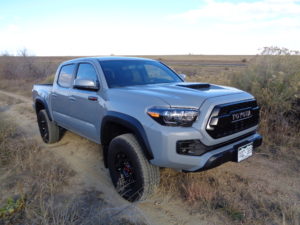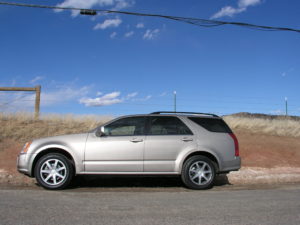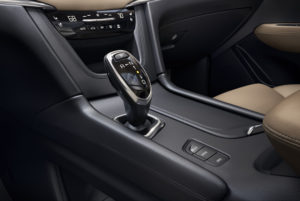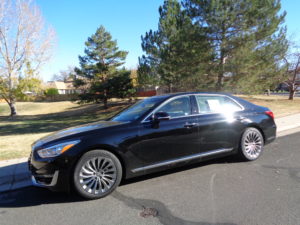
Opportunity fell my way one day recently to drive all over the Denver metro area the first new luxury sedan introduced into this country in more than 10 years.
It’s the 2017 (Hyundai) Genesis G90, which is aimed at those German giants Mercedes-Benz, BMW and Audi. Full-size luxury, no less.
Is it possible Hyundai, the Korean builder of small, economical cars, can compete in the exclusive, high-end world of automobiles?
“It’s all about value,” said Vince Armijo, general manager of McDonald Hyundai, as he handed me the keys to a caspian black G90 all-wheel-drive four-door, showing only a couple hundred miles on its odometer.
Up front on the long, sleek sedan is a large grille that resembles that of an Audi. The G90 stretches to 204.9 inches in overall length, only an inch and a half shorter than the BMW 740xi and Mercedes S550 4Matic.
“Our new one measures up in every way to those two $100,000-plus automobiles,” said Armijo. Look at our sticker. I did ‑ $71,550.
That indicates the G90 can compete not only with the top-level luxuries, also those a step down, such as the Lexus LS460, Mercedes E Class, BMW 5 series and the Jaguars.
Under the hood of the Genesis is a twin-turbocharged 3.3-liter V-6 engine developing 365 horsepower and 376 lb.-ft. of torque. It’s strong in performance, not instantly, but at midrange, when the power comes on with a rush. An 8-speed automatic transmission is quick and smooth in shifts and can be more closely controlled with paddle shifters on the steering wheel. Responses of the transmission, throttle, suspension, steering and stability control can be altered with Hyundai’s Intelligent Drive Mode between Eco, Smart, Sport and Individual settings.
Also available is a 5.0-liter, direct-injected V-8 producing 420 horsepower.
The V-6, though, handled the 4,800-pound four-door in impressive fashion, as I drove it all over the area, from Brighton at the north to the Denver Dumb Friends League at the south. It averaged 21 miles per gallon of premium fuel.
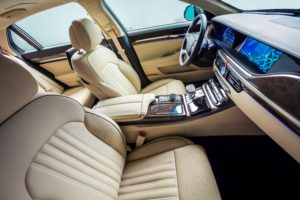
The interior is plush, with finely stitched nappa leather and a headliner of suede. Power sunscreens add comfort at the rear window and rear side windows. Put the car’s shifter in reverse with the back-window screen in place, and the screen automatically lowers to open up the reverse view. Move shifter back to drive and the back screen moves up into place again.
Among safety innovation for the G90 are automatic emergency braking with pedestrian detection, smart blind-spot detection, lane-departure warning and driver-attention alert.
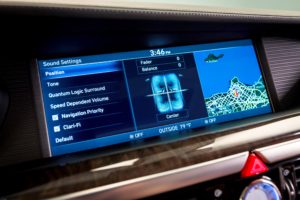
Also included in the $71,550 sticker price are heated and cooled front seats, navigation and Lexicon 17-speaker surround-sound with 12.3-inch display screen, multiview camera front and rear, head-up display, power door closures, three-zone automatic climate control.
The creation of the Genesis G90 for the luxury division came after Hyundai a year ago halted production of two large standard autos, the original Genesis and Equus.
Added to the Genesis line also is a G80 midsize sedan, smaller than the G90.
The G90 will be sold only by Genesis dealers, of which McDonald’s is one of two in Denver awarded the honor.
McDonald Automotive Group dates back more than 50 years in Denver, when Doug McDonald came to town and opened a Volkswagen dealership. Added since are stores for Audi, Volvo, Mazda and Hyundai.
Doug McDonald was chosen Colorado Time Dealer of the Year in 1991.



